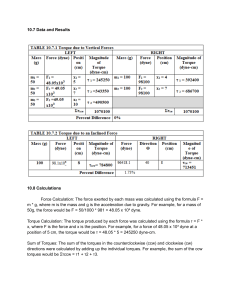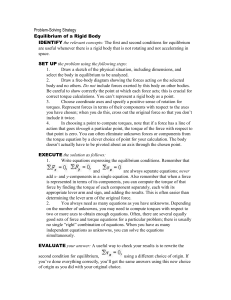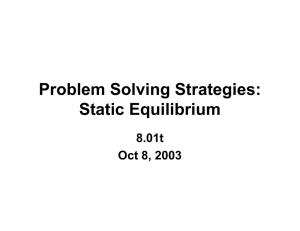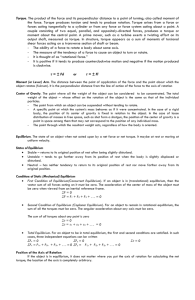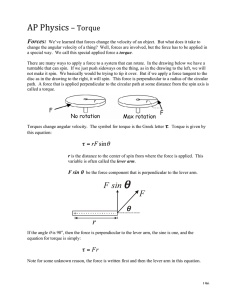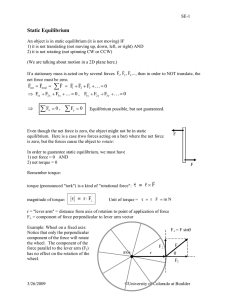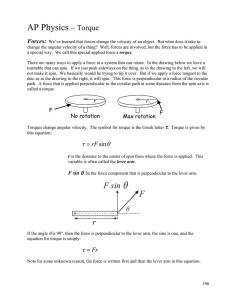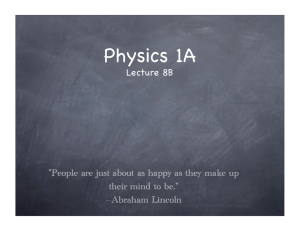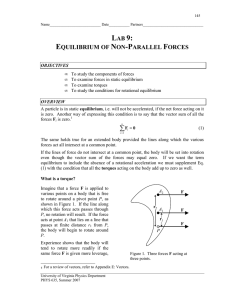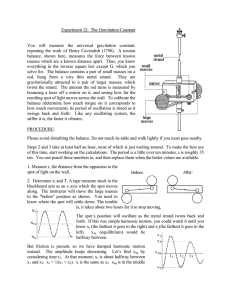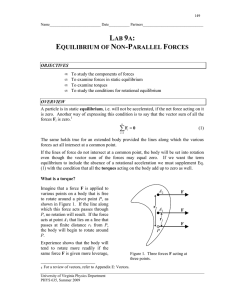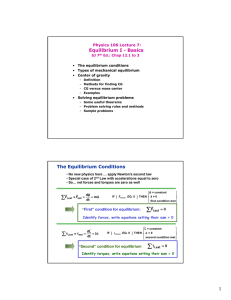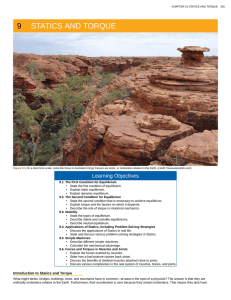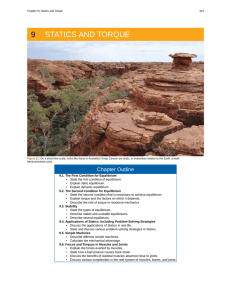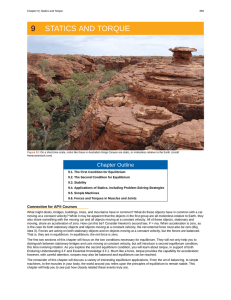FORCES, TORQUES, AND EQUILIBRIUM INTRODUCTION
advertisement
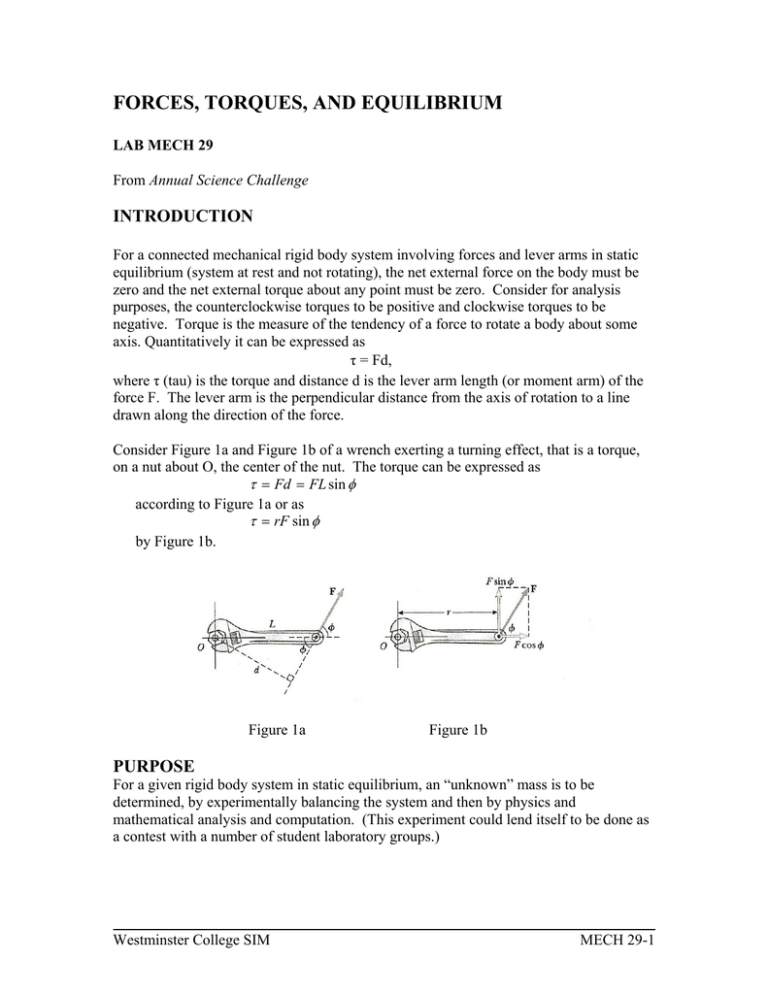
FORCES, TORQUES, AND EQUILIBRIUM LAB MECH 29 From Annual Science Challenge INTRODUCTION For a connected mechanical rigid body system involving forces and lever arms in static equilibrium (system at rest and not rotating), the net external force on the body must be zero and the net external torque about any point must be zero. Consider for analysis purposes, the counterclockwise torques to be positive and clockwise torques to be negative. Torque is the measure of the tendency of a force to rotate a body about some axis. Quantitatively it can be expressed as τ = Fd, where τ (tau) is the torque and distance d is the lever arm length (or moment arm) of the force F. The lever arm is the perpendicular distance from the axis of rotation to a line drawn along the direction of the force. Consider Figure 1a and Figure 1b of a wrench exerting a turning effect, that is a torque, on a nut about O, the center of the nut. The torque can be expressed as τ = Fd = FL sin φ according to Figure 1a or as τ = rF sin φ by Figure 1b. Figure 1a Figure 1b PURPOSE For a given rigid body system in static equilibrium, an “unknown” mass is to be determined, by experimentally balancing the system and then by physics and mathematical analysis and computation. (This experiment could lend itself to be done as a contest with a number of student laboratory groups.) Westminster College SIM MECH 29-1 Forces, Torques and Equilibrium MATERIALS meter stick rod clamp mount pivot mount pulley with mount level slotted masses with hanger unknown mass protractor string PROCEDURE The experimental problem to be solved, is based on the arrangement of Figure 2 (below), for which the unknown mass is to be determined. Known slotted masses to provide the balancing weight are provided as well as a protractor. The masses of the meter stick and of the level are knowns. As part of the performance of the experiment, is setting up the arrangement as shown in Figure 2 satisfying the conditions of static equilibrium. Figure 2 ANALYSIS With the arrangement set up and balanced for static equilibrium; obtain and record experimental data so as to proceed toward determining the unknown mass, which is to be calculated based on principles of physics. Draw and label a force diagram, referred to as a free-body diagram, for the arrangement. Write a mathematical relationship satisfying the conditions of the physics of the arrangement under static equilibrium, by which the unknown mass can be calculated. Calculate the unknown mass showing your work, including explanatory comments. Westminster College SIM MECH 29-2

